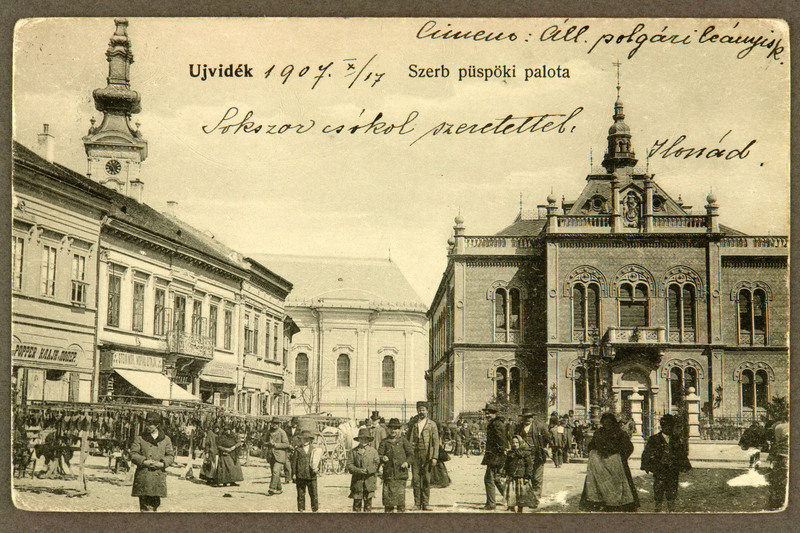Zmaj Jovina street in Novi Sad

The streets of today's city centre, from where you can go on a tour of the Almaš Neighbourhood, were once the centre of economic life.
PIJACA (Piazza) – is the traditional name for today's Jovan Jovanović Zmaj Street. It was and remains the main street of the city. Its peculiarity was the combination of a significant number of various trade and craft shops with market goods displayed on mobile stalls in front of them. In the form of a street market, it existed from the foundation of the city until the third decade of the XX century. Afterwards, it extended from the beginning of Danube Street to the later pulled-down Armenian Church at the end of the street called Gospodski sokak. The street market worked every day until noon when the stalls were removed and the street was cleaned. It was a reason for civic pride. Jakov Ignjatović wrote about this in his novel Trpen-spasen (Everything comes to him who waits) (1874):
“Well, who hasn't heard of the Novi Sad market? There you have everything cheap; and all that in a town not having a total of twenty thousand inhabitants. But everyone from Novi Sad is proud of their market. If you are in the company or on a steamboat with someone from Novi Sad, be careful not to mention in the conversation that there is a similar market anywhere in the world because they will smile pitifully at you; but they are right. When you compare other places with Novi Sad, you make a bad impression. There were so many merchants there that if all the merchants in Europe perished, they could replace them all around Europe. And watermelon sellers – those wonderful sons of Novi Sad gardens – made the name of Novi Sad famous far and wide.ˮ
Gardeners from Novi Sad were very progressive at that time, they knew about crop rotation and greenhouses. That was industrial, intensive agriculture. Through the city Jewish merchants, they delivered their products to the markets of Pest and Vienna. For Jakov Ignjatović, the important features of Novi Sad in the first part of the second half of the XIX century were: The Bois de Boulogne of Novi Sad (Kamenički Park), the market, and numerous merchants.
Images
